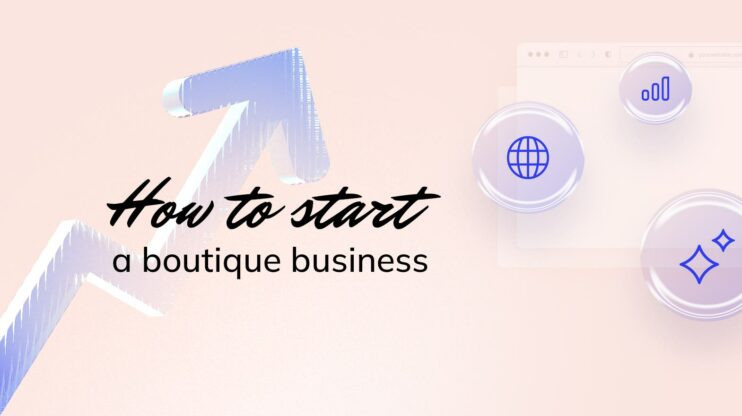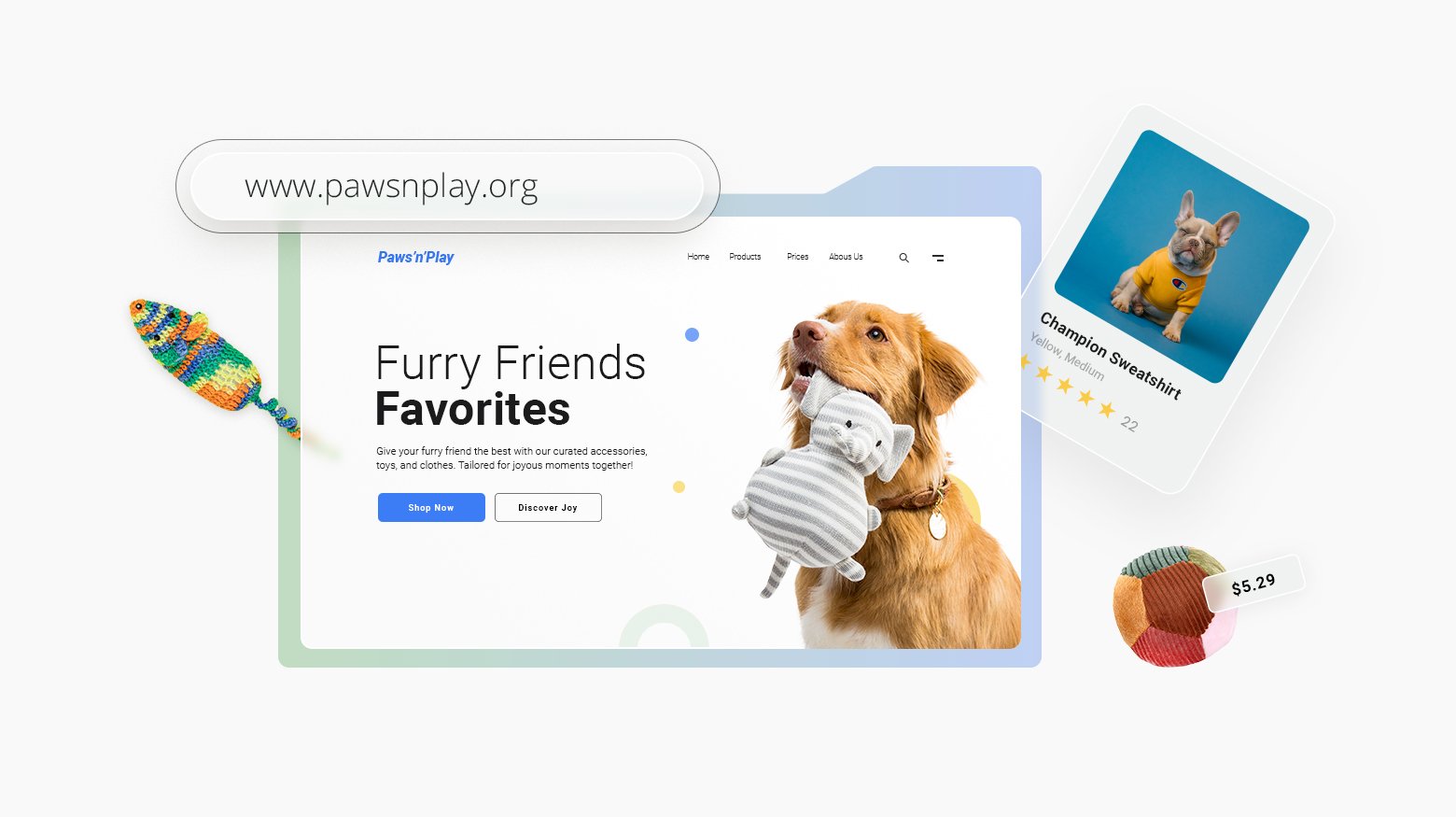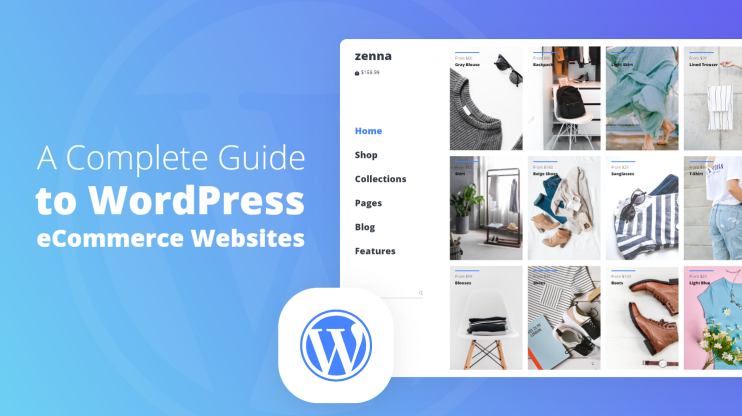Starting your own online business can be a rewarding venture. It lets you choose your own hours while taking advantage of the vast market reach of the internet. But if you’re like most early entrepreneurs, you’re probably wondering how to start an online business. Don’t worry, 10Web has you covered.
This article provides a comprehensive guide on how to start a business online, breaking down the process into easy, actionable steps for beginners. From identifying your business and building a website to marketing strategies and legal considerations, you’ll find everything you need to embark on your entrepreneurial journey. Understanding these fundamentals is crucial for turning your online business idea into a successful reality.
Stage 1: Choosing your online business idea
When creating an online business, focus on identifying your market, analyzing market opportunities, considering business models, and validating your idea through research. These steps will help ensure you find a viable market and a strong foundation for your venture. If you’re still feeling a little lost, be sure to check out our article on the best online business ideas for this year.
Step 1: Identify and plan your business
One of the first steps to starting an online business is to identify your business’s main focus. This includes identifying a specific area of a market that you can target. Think about your interests, skills, and experiences. What are you passionate about? What problems can you solve?
Consider using online tools like Google Trends or keyword planners to see what people are searching for. A well-defined business will help you stand out in a crowded marketplace and attract a loyal audience.
Step 2: Analyze market opportunities
Analyzing market opportunities involves looking at the demand and competition for your business. You need to find a balance between a popular market and one that isn’t oversaturated. Start by researching your target audience. Who are they? What do they need or desire? What are the pain points with the current status quo?
Use platforms like Amazon and eBay to see what products are selling well. Look at customer reviews to understand pain points and preferences. This market research will give you a clearer picture of the opportunities available and help you pinpoint where you can offer value.
Step 3: Consider the online business models
Choosing the right business model is essential for the success of your online business. There are several models to consider, such as ecommerce, subscription services, affiliate marketing, and digital products like eBooks and online courses. Think about what aligns with your interests and your strengths.
For example, if you have expertise in a specific subject, creating an online coaching business could be a good fit. If you prefer less hands-on involvement, affiliate marketing–where you earn commissions on products sold through your referrals–might be better. Your business model will determine how you generate revenue, so choose wisely.

Build your website in 1 minute
Create your dream website with 10Web AI Website Builder
and take your business online!
Step 4: Validate your idea through research
After identifying the business idea and analyzing market opportunities, it’s time to validate your idea through research. Validation involves confirming that there is demand for your product or service. You can do this through methods like surveys, focus groups, and pre-orders.
Create a simple landing page describing your product and invite people to sign up for more information or to pre-order. Use social media to gauge interest and gather feedback. Validation helps you avoid investing time and money in an idea that won’t work.
Taking these steps can help ensure a solid foundation when creating an online business, guiding you toward a successful online venture.
Step 5: Observe legalities and compliance
When creating an online business, you must be aware of the legal requirements and ensure you adhere to them. This includes registering your business name, securing the necessary licenses and permits, and protecting your intellectual property.
Registering your business name and domain
First, choose a unique business name. You can use 10Web’s AI Business Name Generator which will assist you in finding the best name for your business easily and quickly. Make sure it isn’t already in use by searching databases like the U.S. Patent and Trademark Office (USPTO) or your local secretary of state website. Once you’ve selected a name, register it with the appropriate government agency.
Next, secure your domain name. This is the URL where customers will find your business online. Many domain registration services, like 10Web Domain Name, can help you find an available domain that matches your business name. Don’t forget to renew your domain registration annually to keep it active.
Navigating licenses and permits
Different types of businesses require various licenses and permits to operate legally. Check with local, state, and federal authorities to identify which ones apply to you. For example, if selling products, you might need a sales tax permit. Some businesses also need professional or industry-specific licenses.
Create a list of the required licenses you need. Visit the official websites of the relevant authorities to apply. Make sure to keep a record of your applications and approvals, as you may need to renew some permits periodically.
Protecting with copyrights and trademarks
Protecting your intellectual property is crucial. Trademarks safeguard your brand’s name, logo, and slogans. Registering your trademark with the USPTO prevents others from using something too similar to your brand. Fees apply, and the process can take several months, but it’s essential for your brand’s long-term protection.
Copyrights are vital for any original content you create, such as blog posts, videos, or photos. You automatically own the copyright once the content is created. Register with the U.S. Copyright Office for added legal protection, especially if you suspect someone might steal or use your content without permission.
Step 6: Write your online business summary draft
The executive summary is a brief overview of your entire business plan. It should capture the essence of your business, including your mission statement, product offerings, and key objectives.
This section should be engaging, concise, and entice readers to explore the plan further. Include your business name, location, and major achievements. Briefly mention your target market and main competitors.
Also, outline the financial projections and expected return on investment. This summary should be clear and straightforward, showing readers why your business will succeed.

Build your website in 1 minute
Create your dream website with 10Web AI Website Builder
and take your business online!
Step 7: Define your business structure
Choosing the right business structure is important and influences your legal obligations, taxes, and liability. There are several structures to consider:
- Sole Proprietorship: Simple and easy to set up but offers no personal liability protection.
- Partnership: Ideal for businesses owned by two or more people. Responsibilities and profits are shared.
- Corporation: Provides personal liability protection but is more complex and costly to establish.
- Limited Liability Company (LLC): Combines the benefits of both a corporation and a partnership.
Select a structure that aligns with your business goals, size, and resources. Consult with a legal expert if necessary to make an informed decision.
Step 8: Outline operational logistics
Operational logistics cover the day-to-day processes crucial to running your business. This includes:
- Production: Detail how you will produce or source your products.
- Supply chain management: Outline how you will manage suppliers and inventory.
- Distribution: Describe your sales channels and how you will deliver your products to customers.
- Staffing: Specify the roles you’ll need to fill and your hiring process.
- Technology: State any software or tools essential for your operations.
Clearly defining these logistics ensures that your business runs smoothly and efficiently. Consider creating timelines and milestones to track your progress and adjust your strategy as needed.
Step 9: Calculate initial costs
When starting an online business, understanding and estimating your initial costs are essential. These include startup expenses, setting up a realistic budget, and exploring funding options.
Estimating startup expenses
Identify all potential expenses you might incur when starting your business. Start with registration fees and legal costs to establish your business legally. Next, list out the technology costs such as website domain, hosting fees, and software subscriptions.
Include costs for inventory if you’re selling physical goods. Research suppliers to get accurate prices. Don’t forget marketing expenses like advertising, online promotions, and social media campaigns.
Factor in operational costs like shipping, packaging, and customer service tools. Use this detailed list to create a comprehensive overview of your initial expenses.
Setting up a realistic budget
Creating a budget helps you manage your finances effectively. Begin by totaling the estimated startup expenses from the previous section. Allocate funds for each category to ensure you have enough capital.
Consider unexpected costs by adding a buffer, usually around 10-20% of your total estimated costs. Use tools like spreadsheet software or budgeting apps to organize your budget.
Keep track of monthly expenses by listing fixed and variable costs. Monitor your spending to stay within your budget, ensuring you have enough cash flow to sustain operations.
Understanding funding options
If your startup costs exceed your savings, explore various funding options. Personal savings are often the first source of capital. Consider small business loans from banks or credit unions for larger amounts.
Look into crowdfunding on platforms like Kickstarter or GoFundMe. Reach out to angel investors or venture capitalists for additional funding opportunities. You can also apply for grants from organizations that support small businesses. Be sure to research and understand the requirements for each funding option to make an informed decision.
Starting an online business involves careful planning and management of your startup costs, budget, and funding to ensure a successful launch.
Stage 2: Creating an online business presence and establishing your products
To succeed online, it is key to have a user-friendly website, leverage social media effectively, and create engaging content that attracts and retains customers.

Build your website in 1 minute
Create your dream website with 10Web AI Website Builder
and take your business online!
Step 1: Design a user-friendly website
Creating a website that is easy to navigate is central to your online business success. Start by choosing a domain name that is memorable and related to your business. Using web design services or a website builder like 10Web can make this process smoother.
Here are some steps to follow:
- Select a domain name: Keep it simple and relevant.
- Pick a website builder: 10Web AI Website Builder allows you to create a relevant website for your business in a couple of minutes just by answering a couple of questions.
- Design the layout: Make sure it is intuitive, with clear navigation; however, if you are a 10Web user, most of the design will be done by the AI during the generation process, which you are able to update based on your preferences afterward.
- Optimize for mobile: More people are online shopping on mobile devices, ensuring that the website is optimized for mobile.
- Ensure fast load times: Use tools to compress images and scripts.
These steps will help users find what they need quickly, improve user experience, and keep visitors on your site longer. Nevertheless, by becoming a 10Web user and generating your website with the AI Business Website Builder, all of these steps will be automated and optimized, allowing you to focus on more important aspects of managing your online business.
Step 2: Leverage social media platforms
Social media is a powerful tool for building your online presence. Focus on the platforms where your audience spends the most time.
Here’s how to get started:
- Choose platforms: Start with Facebook, Instagram, and X (Twitter).
- Create profiles: Use your business name and logo for consistency.
- Post regularly: Share updates, promotions, and engage with followers.
- Use hashtags: Increase visibility by using relevant hashtags.
- Engage: Respond to comments and messages promptly.
Effective use of social media platforms can drive traffic to your website or online store and increase brand awareness.
Step 3: Create compelling content marketing
Content is key to attracting and retaining visitors. Create content that provides value and showcases your expertise.
Follow these steps:
- Understand your audience: Research what your customers are interested in.
- Create a blog: Share tips, how-to guides, and industry news.
- Use multimedia: Mix in videos, infographics, and images.
- SEO optimization: Use keywords to help your content rank higher on Google.
- Quality over quantity: Focus on creating high-quality, informative posts.
By regularly updating your content and keeping it engaging, you will build a loyal audience and establish your business as an authority in your industry.
Step 4: Create or source your products
First, decide whether you want to create your own products or source them from suppliers. If you’re making your own products, focus on quality. Look for ways to improve your product over what’s already available. When sourcing products, research suppliers carefully. Ensure they are reliable and offer good quality.
Another option is to offer services. These could be consulting, design, or digital services such as app development. For digital products like software or eBooks, make sure they meet customer needs and offer value.
List out what makes your products or services unique. This helps in creating a compelling pitch to customers.
Step 5: Determine your inventory needs
Once you know what you’ll offer, figure out how much inventory to keep on hand. If you’re selling physical products, find a balance between having enough stock and not overstocking. Too much can tie up funds and storage space, while too little risks running out and losing sales.
For digital products, inventory isn’t a concern, but you will need to ensure you have the necessary infrastructure. For instance, if you’re offering software, make sure your servers can handle user loads.
Use tools and software – like WooCommerce – to manage inventory efficiently. Regularly review what sells well and adjust orders and stock levels accordingly. However, if you use one of 10Web’s ecommerce plans, you will be able to manage your inventory on a more user-friendly platform.

Step 6: Set competitive prices
Setting the right price is crucial. Start by researching your competitors. Look at their pricing, but don’t just copy it. Consider your costs, including materials, labor, and shipping. This helps in calculating your profit margin.
For services, consider the time required to deliver them. Digital products might have lower ongoing costs but may need initial investment.
Offer different pricing tiers if possible. This can appeal to a broader range of customers. Make sure your pricing is clear and transparent to build trust with your customers.
Competitive pricing can be a strong point that sets you apart in the market, whether you’re offering physical products, digital goods, or services.

Build your website in 1 minute
Create your dream website with 10Web AI Website Builder
and take your business online!
Stage 3: Create marketing and promotional strategies
To succeed in marketing and sales for your online business, focus on optimizing for search engines, using paid ads effectively, and crafting strong email marketing campaigns.
Step 1: Execute search engine optimization
Search engine optimization (SEO) is central to driving organic traffic to your ecommerce business. Start by identifying relevant keywords that your potential customers use to search for products or services similar to yours. Use tools like Google Keyword Planner or SEMrush to find these keywords.
Next, integrate these keywords naturally into your website’s content, including product descriptions, blog posts, and meta tags. Ensure your site is mobile-friendly and has fast loading times, as these factors affect search engine rankings.
Lastly, build backlinks by partnering with other websites or guest blogging. Quality backlinks from reputable sites can boost your visibility and authority.
Step 2: Utilize paid advertising channels
Paid advertising channels, such as Google Ads or Facebook Ads, can give your online business a significant boost. Start by setting a clear budget and goals for your campaigns. Decide whether you want to increase website traffic, generate leads, or boost sales.
Use targeted ads to reach your desired audience. Platforms like Facebook Ads allow you to customize who sees your ads based on demographics, interests, and behaviors. This ensures your ads reach those most likely to be interested in your products.
Monitor your ad performance regularly. Use analytics tools to track which ads are performing well and adjust your strategy accordingly. This way, you can optimize your ad spend and maximize your return on investment.
Step 3: Employ effective email marketing
Email marketing is a powerful tool for building relationships with your customers. Start by collecting email addresses through your website, offering incentives like discounts or free eBooks in exchange for signing up.
Segment your email list based on customer behavior or preferences. This helps you send personalized content that resonates with different groups of subscribers. For example, send first-time buyers a welcome series, while loyal customers might appreciate early access to new products.
Design engaging email campaigns with compelling subject lines and clear calls to action. Use tools like Mailchimp or Constant Contact to automate your emails and track their performance. Regularly analyze open rates and click-through rates to fine-tune your strategy.
Monetize your platform
Monetizing your platform involves various strategies like leveraging affiliate marketing, setting up subscription services, and offering online courses or coaching. Each approach has its unique advantages and can help you generate steady revenue.
Explore affiliate marketing
Affiliate marketing allows you to earn a commission by promoting products or services from other companies. It’s a great way to generate revenue without having to create your own products. Here’s how you can get started:
- Join affiliate programs: Sign up for affiliate programs relevant to your niche. Popular options include Amazon Associates, ShareASale, and ClickBank.
- Promote products: Use your content to recommend products. This could be through blog posts, social media, or email newsletters.
- Track performance: Use tracking tools to monitor clicks and conversions to understand which products perform best.
Affiliate marketing works well if you have a good amount of traffic and a trustworthy relationship with your audience.
Launch online courses and online coaching
Offering online courses or coaching sessions is another effective way to monetize your platform. Sharing your expertise can be rewarding both financially and personally.
- Design the course: Structure your course content with clear objectives and actionable lessons. Use videos, PDFs, and quizzes to enhance the learning experience.
- Choose a platform: Platforms like Teachable, Udemy, or Kajabi can help you host and sell your courses.
- Market your course: Promote your course through your website, email list, and social media to reach a wider audience.
Coaching can also be offered one-on-one or in group sessions, providing personalized guidance and support to your clients. Charging for your expertise not only helps you earn revenue but also establishes you as a thought leader in your field.

Build your website in 1 minute
Create your dream website with 10Web AI Website Builder
and take your business online!
Analyze and refine your business
It’s crucial to keep an eye on your business’s performance, understand your competition, and adapt based on customer feedback to ensure your online business thrives and grows.
Monitor your business performance
To analyze your business performance, set up key performance indicators (KPIs). KPIs can include metrics like sales, website traffic, and customer retention rates. Regularly track these numbers to understand what’s working and what isn’t.
Use tools like Google Analytics or software platforms that specialize in business metrics. Monitoring daily or weekly can help you catch issues early. Adjust your strategies as needed to stay on course.
Create an easy-to-read dashboard where you can see all vital stats at a glance. This can save time and help you make informed decisions quickly.
Conduct competitive analysis
Knowing your competitors is key to standing out. Start by identifying who your main competitors are. Look at their websites, social media, product offerings, and customer reviews.
Analyze their business model and strategies to see what they’re doing well and where they’re lacking. Take note of their pricing, promotional tactics, and customer service. Tools like SEMrush or Ahrefs can help you get insights into their SEO strategies.
Once you’ve gathered data, compare it with your own business. Identify areas where you can improve or differentiate your offerings. This will help you make smarter decisions and stay ahead in your industry.
Adapt to customer feedback
Customer feedback is a valuable resource. Encourage customers to leave reviews and fill out surveys. Pay attention to both positive and negative comments.
Use feedback to identify areas for improvement. If multiple customers mention the same issue, it’s a good sign that something needs to change. Adapt your products, services, or website based on this feedback to better meet customer needs.
Responding to feedback shows customers that you value their opinions, which can improve customer retention and loyalty. Make sure to communicate any changes or improvements to your customers to keep them in the loop.
Refining your approach based on these factors is key to mastering how to start a business online successfully.
Start an online business with 10Web
Starting an online business may seem difficult, but with the right approach, it’s manageable and exciting. By following this guide on how to start your own business online, you can confidently navigate from planning to execution.
If you’re ready to start building a web presence, 10Web is here to help. You can have a personalized online store in minutes. Our AI ecommerce website builder automatically creates ecommerce websites on WordPress. With WooCommerce integration, all the tools you need to manage your ecommerce business website are under your fingertips, in the 10Web dashboard.
Remember, success comes from persistence and continuous learning. Embrace the journey, stay adaptable, and watch your online business thrive.
FAQ
How to start your own business online?
What is the best online business for beginners?
Can I start an online business with no money?
How much money is it to start an online business?













